The Cornish Shrimper 19 is a successfully odd little boat. Odd because of its almost-plumb stem, square-shouldered bowsprit, near-vertical hull sides, a flush deck that wondrously scrunches a usable cabin underneath itself, a peculiar pair of deadlights peering like a shark’s eyes from just under the rubrail, a striking profusion of teak brightwork adorning its production fiberglass hull, and a proudly anachronistic gaff rig. But it’s likely these very features are what has made it a success with 1,168 built over a 43-year production run that still hasn’t ended.
British builder Cornish Crabbers says the Shrimper 19 was the best seller in its line of sailboats ranging from 17′ to 30′ for decades, though now the roomier and much costlier Shrimper 21 has ascended to top seller in its lineup. But the manufacturer is still building a handful of the 19s to order every year, says managing director Peter Thomas. It is not an inexpensive boat: current base price is about $40,000 for U.S. customers (not including engine or import duty).
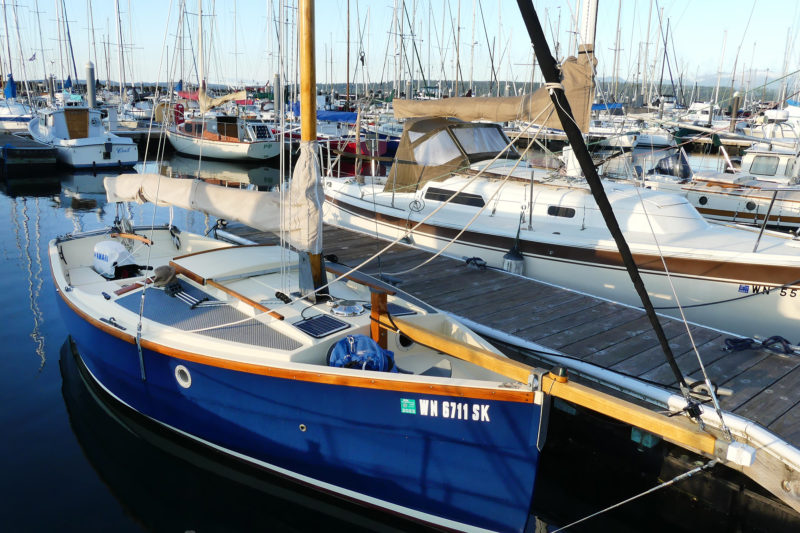 All photographs by the author
All photographs by the authorThe recessed foredeck serves as an anchor well and is self-draining. The Sitka-spruce mast is set in a stainless-steel tabernacle to ease the task of lowering the rig for trailering.
“The viability only comes because of the niche that we created,” Thomas said in an interview. “We have kept up a build quality that exceeds all those around us and not fallen into the trap of building them cheaper. The early boats are still very active and perfectly sound.”
The particular boat profiled here is among those early examples, built in 1985. Its owner for the last six years, Kent Zimmerman of Port Townsend, Washington, keeps it in immaculate condition; there’s no hint that it’s a 37-year-old boat. Zimmerman, a retired U.S. Navy and airline pilot, has owned a number of sailboats, though the progression is rather unusual. He started with a Crealock 37, which he lived on but rarely sailed; proceeded through a 25′ Atkin Eric Jr., a 12′ Beetle Cat, and finally the incumbent Shrimper. Although he enjoyed the Beetle Cat, he wanted a boat that was large enough to sleep on but small enough for comfortable singlehanding. And for reasons that are eternally inexpressible but entirely clear to those of us in the circle of gaff-rig enthusiasts, he just loves gaffers.
“I was just drawn to the Shrimper’s aesthetics,” says Zimmerman. “It’s not a wooden boat, but it really looks at home here in Port Townsend.”
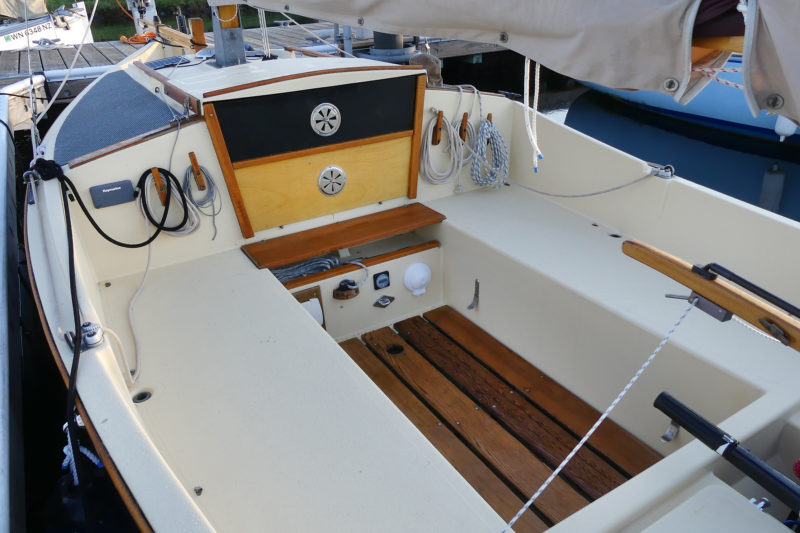
The self-draining cockpit clears water through ports in the footwell and at the corners of the side benches. The low cabin keeps the view forward unimpeded.
Unlike many pocket cruisers, the Shrimper doesn’t strive for self-conscious cuteness; “businesslike” would be a better one-word description. Although its look is unique, it’s not because of a designer’s wayward indulgence: every feature carries an obvious rationale. The upright stem lengthens the waterline and thus enhances the potential hull speed. The squarish bowsprit resonates with the squarish aesthetic established by the stem and vertical hull sides. You understand the advantage of this hullform as you board: a 160-lb person stepping into the cockpit provokes barely a bob, and hints at a very stable ride. There are 700 lbs of ballast, part of it provided by the galvanized steel centerboard. The rudder, a plywood laminate, houses a stainless-steel drop plate to extend its effective area below the keel.
The recessed foredeck provides large, easily accessed anchor and rode storage. The unusual flush-deck cabin is a compromise between living space below and low windage/great visibility above. Whether it’s a workable compromise may depend on your personal dimensions. Cabin headroom is only 43″ in the middle. Seated on one of the quarter-berth settees, my hair is less than 1″ from grazing the overhead—and I’m only 5′ 7″. However, both berths extend through the aft cabin bulkhead and under the cockpit seats for a total 6′ 7″ length. This Shrimper is a Mk I model; the Mk II offers 6″ more headroom.
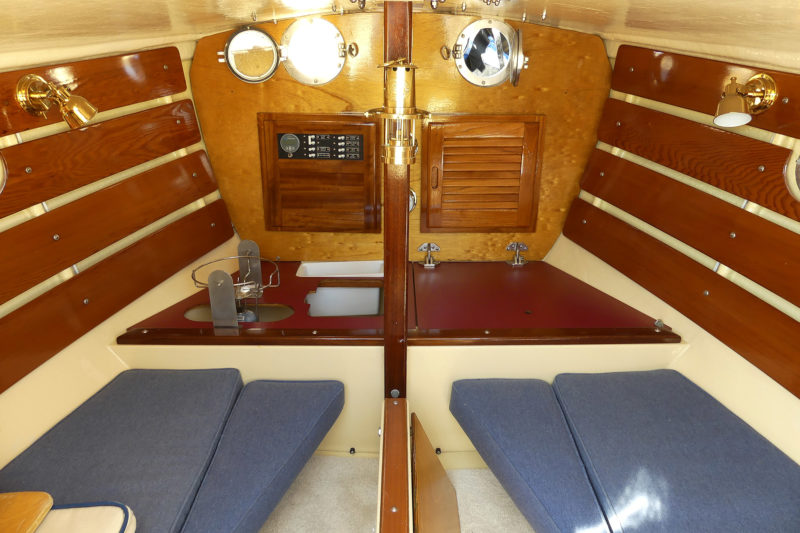
The forward end of the cabin has accommodations for a compact galley. An optional removable tabletop—the plywood to starboard of the centerboard trunk—sits on top of the trunk for dining.
The advantage of the flush deck becomes evident in the cockpit: a glorious, sweeping, 360-degree view. Even a shrimpy helmsman has no trouble seeing forward. And there’s no difficulty clambering onto the deck to get to the mast and the bow.
Mounting an outboard motor is an everlasting problem with small daysailers and pocket cruisers. The Shrimper addresses it with a well in the cockpit, which easily accommodates one of the single-cylinder 4- to 6-hp outboards from various makers. Keeping the motor’s weight low and inboard helps the boat’s balance, but the Mk I’s transom cutout isn’t tall enough to allow tilt-up. Zimmerman’s 6-hp four-stroke Tohatsu outboard, at 60 lbs, is heavy enough to discourage lifting it out for everyday sailing. The Mk II hasn’t remedied this issue, but the builder does now offer inboard diesel and electric outboards as options.
While the Shrimpers are production boats, they’re built to order and each offers a sprawl of options. The current 19 provides more than 40 choices, including a chartplotter, autopilot, carbon-fiber mast, and custom hull colors and fabrics. It wouldn’t be hard to kick the price beyond $50,000. As with most of the Cornish Crabber line, the gaff rig is not open for negotiation: the builder has an unwavering enthusiasm for it. “At the sizes we are building, the gaff rig is far easier to handle shorthanded than a Bermudan-rigged boat,” Thomas said.
So, let’s go sailing.
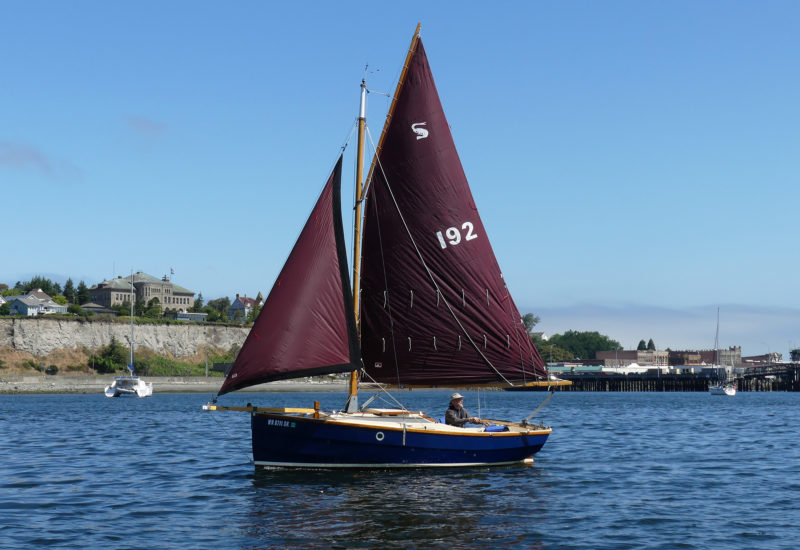
The gaff-sloop rig carries 194 sq ft of sail.
As is typical for a gaffer, the mainsail is a bit of a snarl to hoist and set properly, but once it’s sorted, the Shrimper seems to gravitate to its comfort zone and sail with confidence. And the zone is wide and forgiving. The tiller is all but neutral; fingertips are all it wants or needs. We have an 8- to 10-knot breeze, and on a close reach we’re logging 4.8 to 5 knots. The Shrimper’s theoretical hull speed should be 5.6 knots (I suspect the prop drag is robbing us of a few tenths). The Shrimper clearly has no inclination to go racing, but in compensation it’s remarkably well-behaved. In gusts, the Shrimper heels to about 15 degrees and there reassuringly stiffens up. After a while the gusts seem to be intensifying, so we tuck in a first reef (the Shrimper has two). The boat speed drops only 0.2 knot, and the balance doesn’t change.
I have a gaff-rigger very close to this same size (a Devlin Winter Wren), which seems a little faster and slightly more tender than the Shrimper—exactly what I’d expect, since it’s less beamy, some 300 lbs lighter, and its transom-mounted motor tilts to get the prop out of the water. Both boats tack through about 110 degrees. I’m pretty sure I could coax the Shrimper into tighter upwind sailing with more time and practice. It offers a stout hook for a boom-vang tackle on its galvanized tabernacle—a fairly unusual feature on a boat this size. A gaffer typically sails upwind reluctantly because the head of the mainsail twists away from its alignment with the boom, spilling air and reducing lift in its upper area. If a vang is available to tug the boom downward, the tightened leech will force the gaff into improved alignment. The Shrimper also has a mainsheet traveler mounted just forward of the transom and movable jibsheet fairleads, rounding out a dazzling array of fun tools to tweak sail shape.
The Shrimper turns into a tack rather lazily, losing more momentum than it should as it crosses the wind. Zimmerman says that in light wind he’ll leave the jib backwinded most of the way around to help accelerate the bow into the new tack.
As an experiment, we roll up the jib and try sailing on reefed main alone. The Shrimper still tacks, though it’s now very slow on any point of sail—it clearly craves its jib. The cupcake-sized Harken furler spools the canvas around a flexible cable in the jib’s luff rather than around a rigid tube, so partial furling to reef the jib doesn’t really work. It is possible to leave a hankie-sized scrap of jib flying, which can help with a small boat’s helm balance but doesn’t provide useful thrust. There’s a shortage of affordable small furlers with reefing capability—something small-boat sailors would really appreciate.
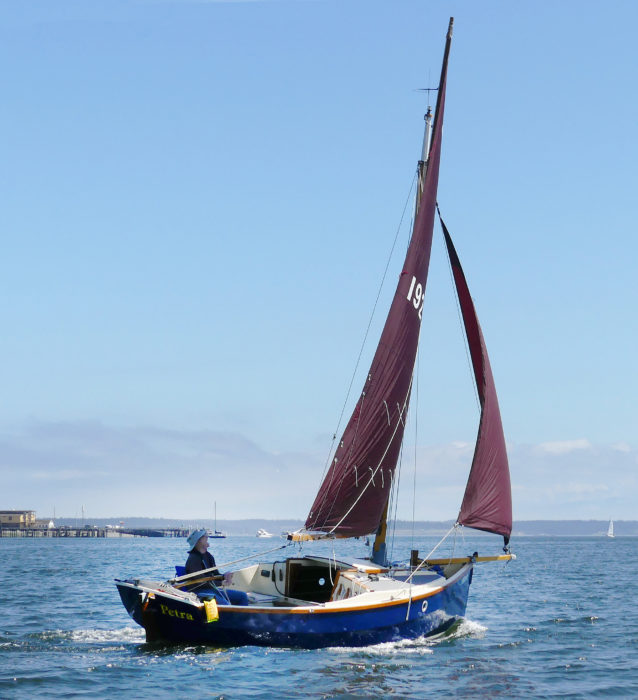
The Shrimper 19 is well balanced under sail with or without reefs and needs only a light touch on the tiller.
There’s a shortage, too, of production pocket cruisers like the Shrimper. Most manufacturers were dropping out of this market segment around the time that Cornish Crabber was slipping in. The reasons are obvious. Most buyers with $40,000 to $50,000 to spend would rather have a good used 30′ boat than a new 19′ boat. And for the manufacturer, big boats are more temptingly profitable than small ones.
By contrast, there’s a galaxy of plans for the amateur builder drawn by very capable designers. In a quick survey of well-known names, I counted 30 available plans for 18′ to 22′ trailerable sailboats with cabin accommodations. And while it’s deeply satisfying to build such a boat, not everyone has the time, space, tools, or perseverance to take it on. There’s also something deeply satisfying about sailing an excellent production boat like the Shrimper, where professionals have spent years—even decades—refining it.
While its aesthetics might not appeal to everyone’s taste, the Shrimper 19 seems to cover all the bases functionally. It’s so easy to sail casually and so well-mannered that a beginner could enjoy it and quickly build confidence. At the same time, it has enough sail-management tools that an expert could stay happily busy and sail like a demon. All this and a cabin, too? Hard to ask for more. ![]()
Lawrence W. Cheek is a journalist and serial boatbuilder (two kayaks and four sailboats to date) who writes frequently for WoodenBoat.
Shrimper 19 Particulars
[table]
Length on deck/19′ 3″
Length overall/22′ 6″
Length of waterline/17′ 7″
Beam/7′ 2″
Draft, centerboard up/1′ 6″
Draft, centerboard down/4′0″
Displacement/2,350 lbs
Ballast/700 lbs
Sail area/194 sq ft
[/table]
The Cornish Shrimper 19 is available from Cornish Crabbers.
Is there a boat you’d like to know more about? Have you built one that you think other Small Boats Magazine readers would enjoy? Please email us!
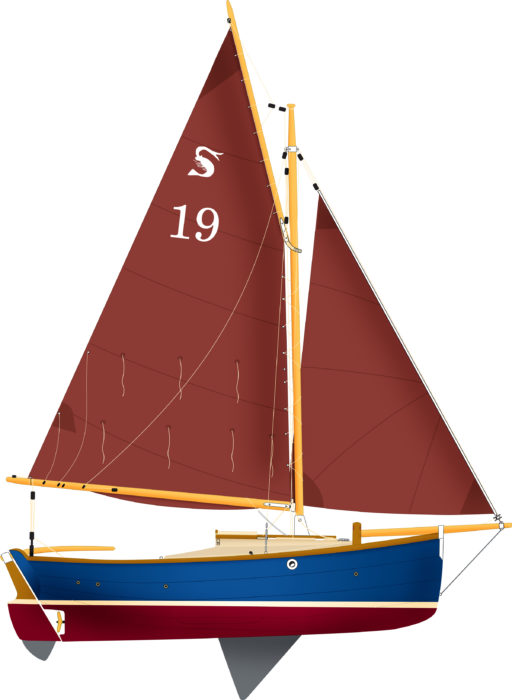
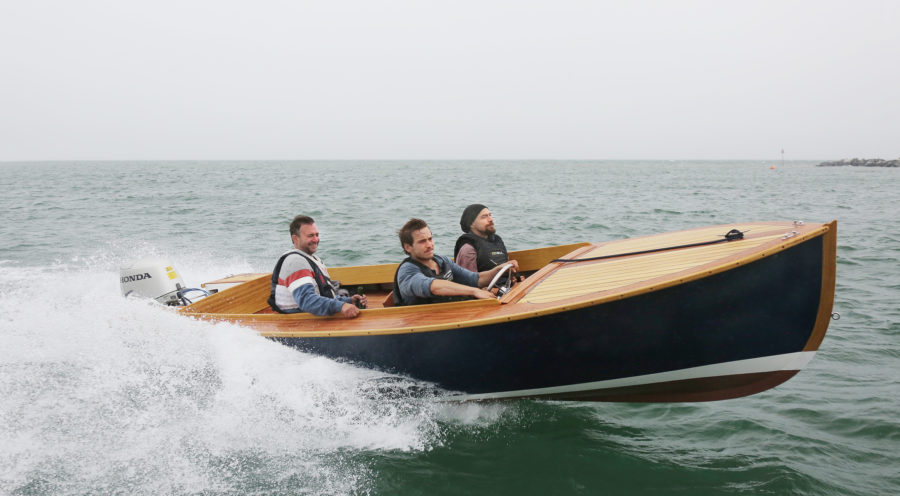
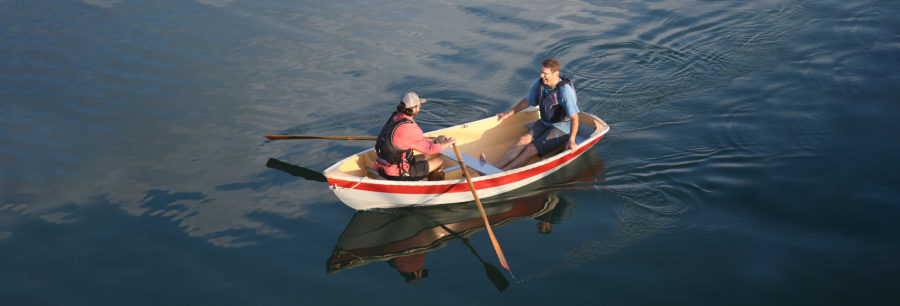

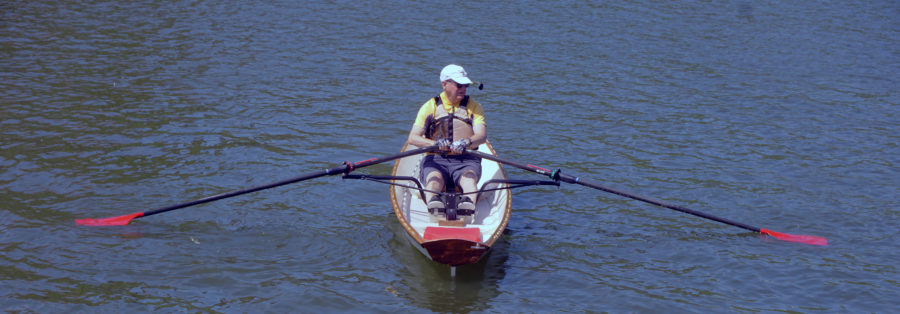

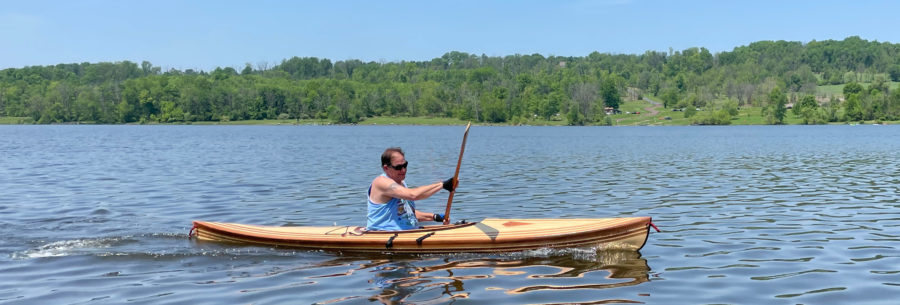


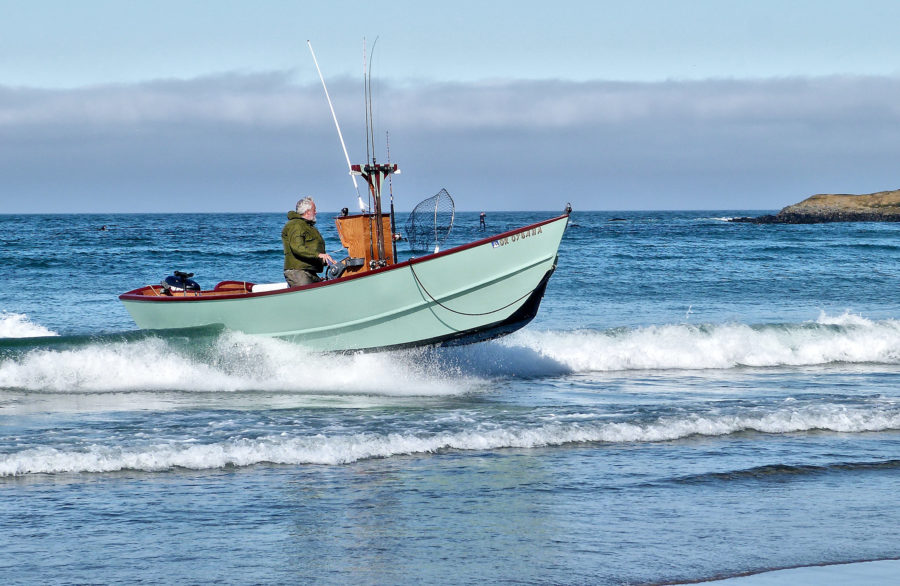
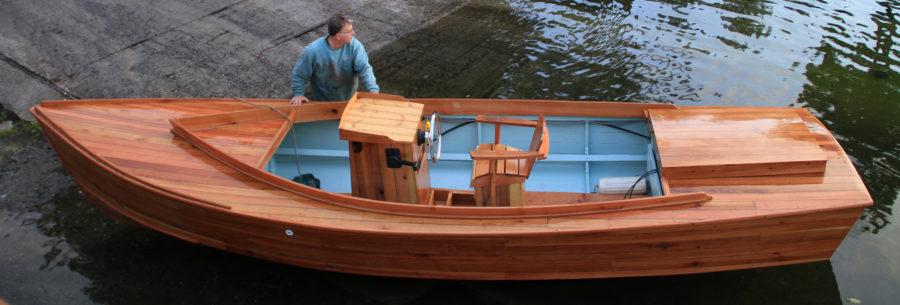
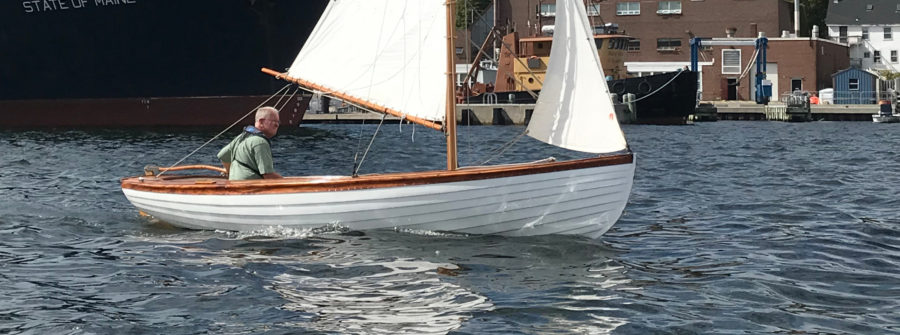
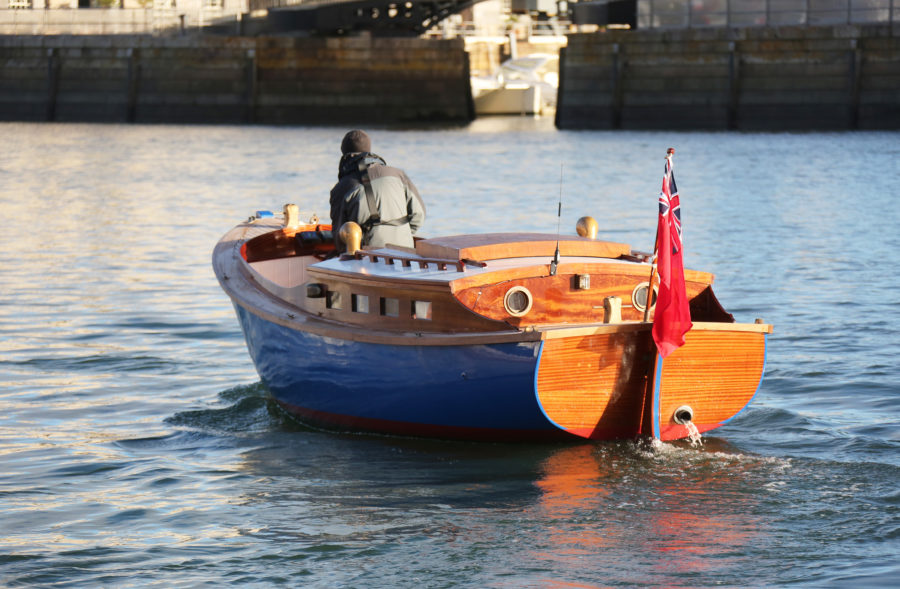
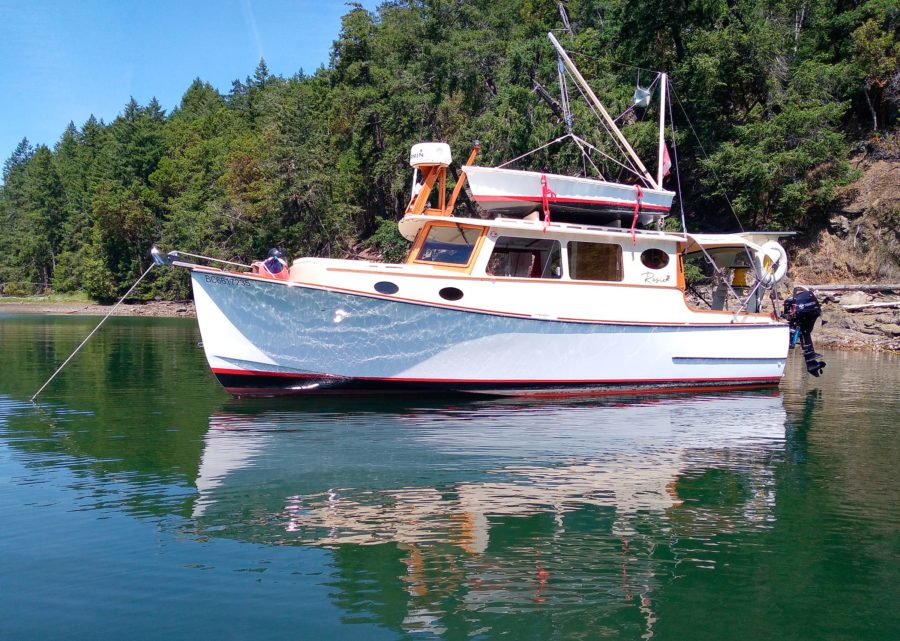
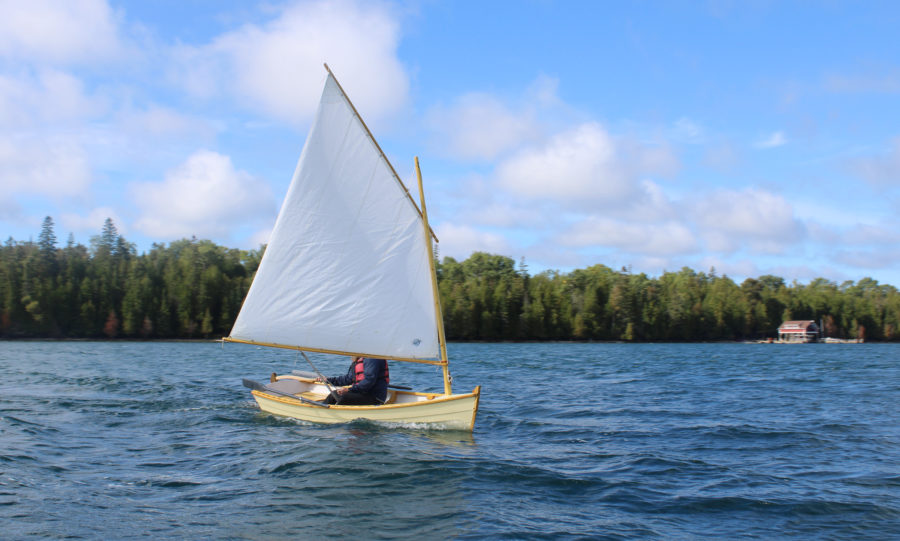
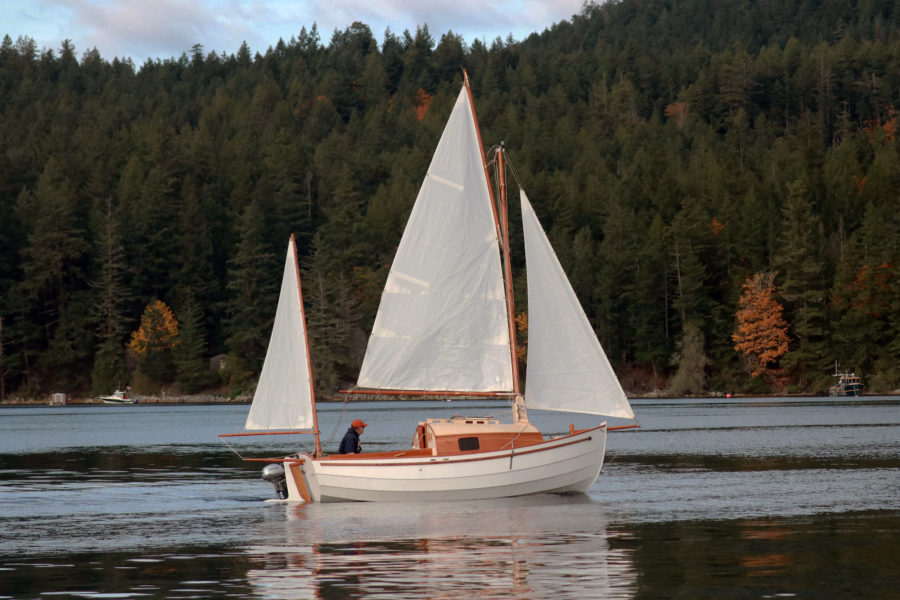
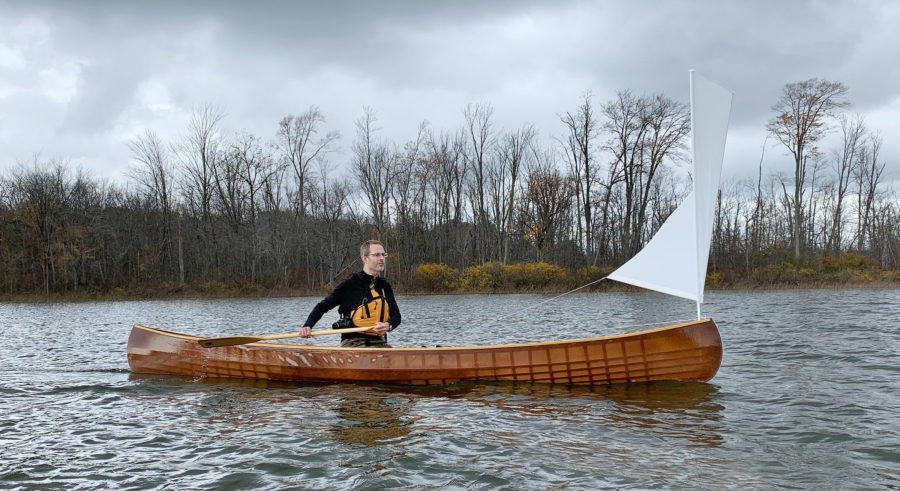
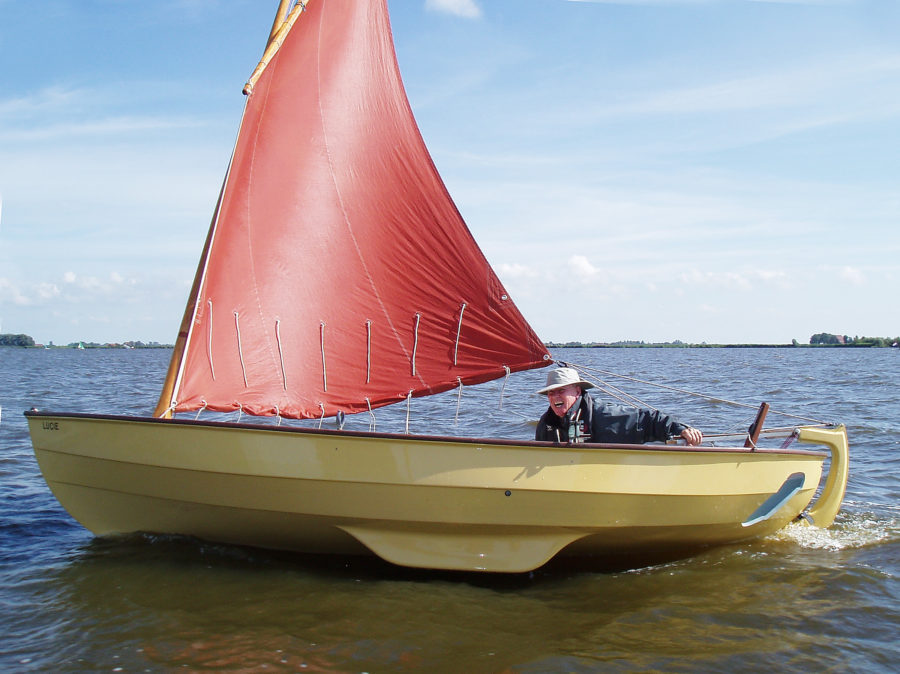
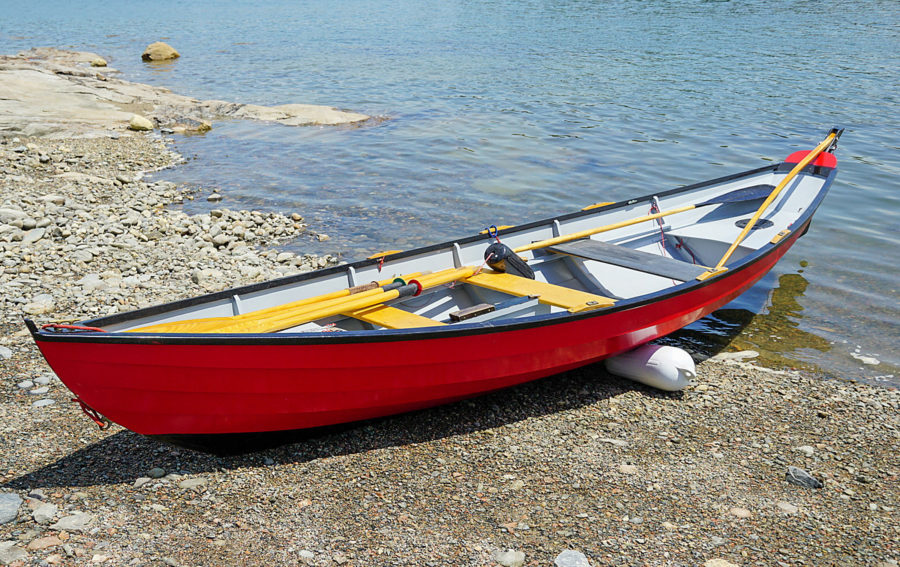
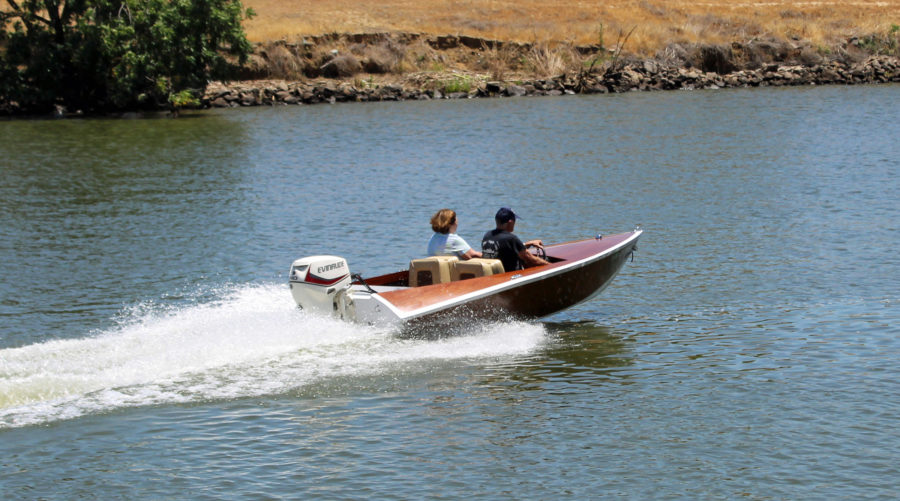
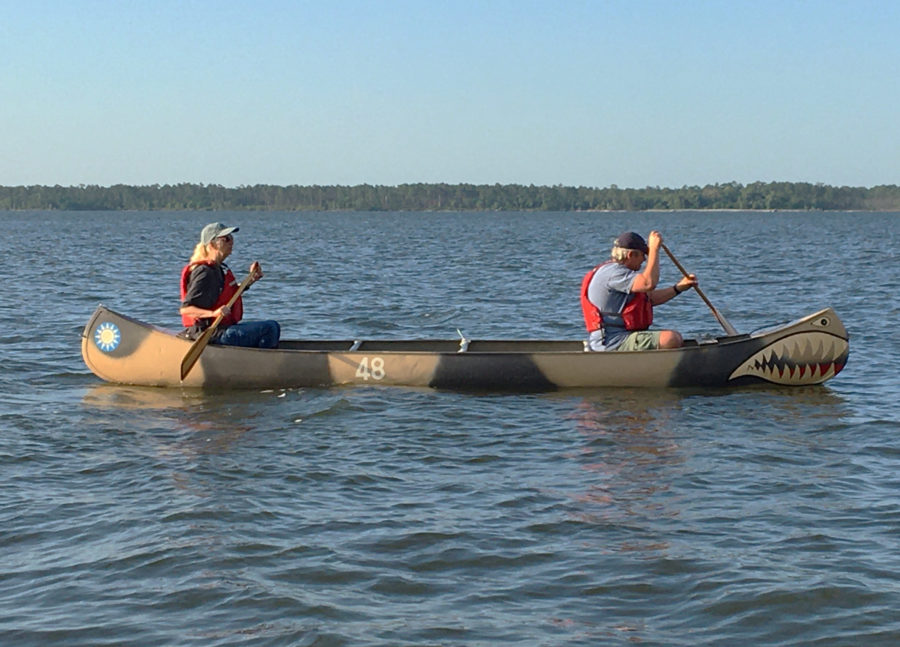
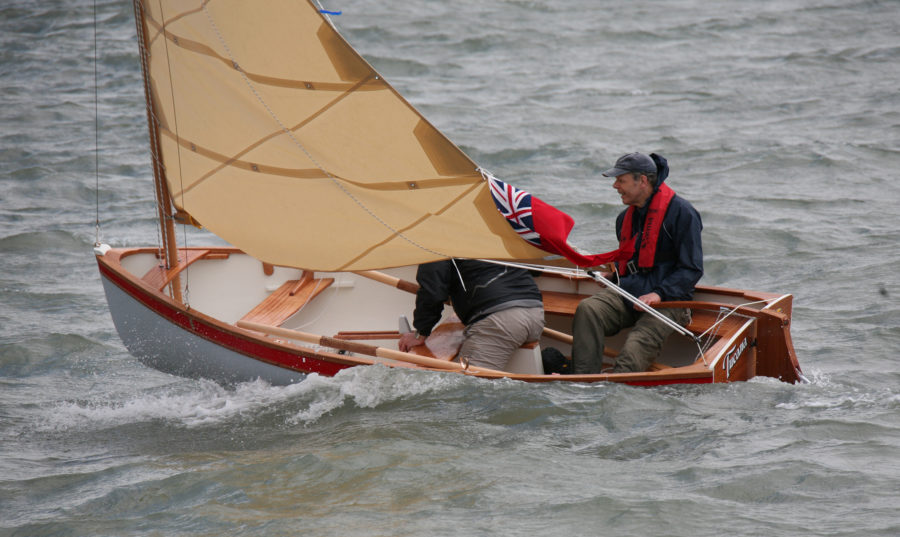
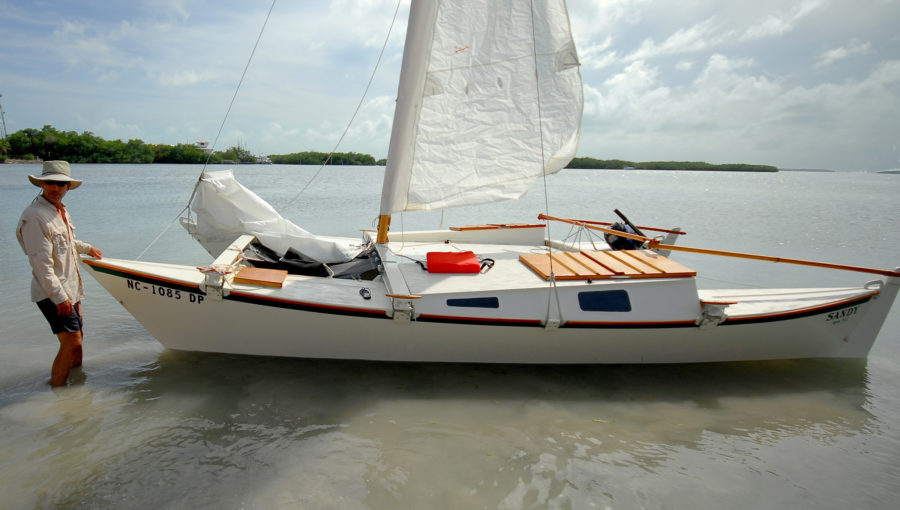
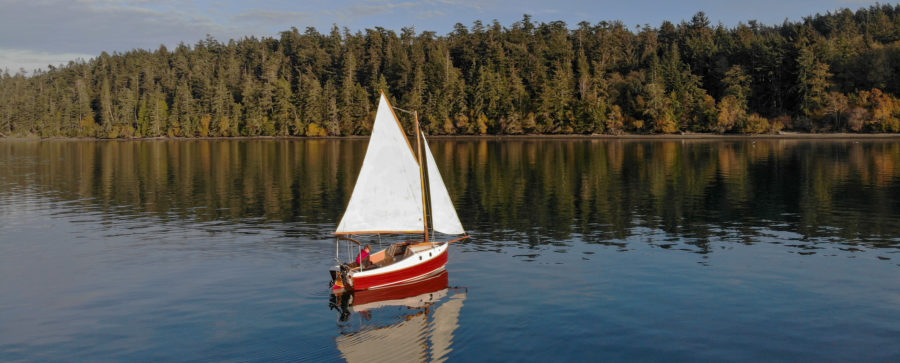
We have a Cornish Shrimper 19 that we absolutely love! We sailed ours from Key Largo, Florida, to Bimini, Bahamas, this past Spring. Quite the capable and comfortable cruiser. We are thinking about selling for slightly larger trailerable boat and it will truly be a sad day when we see her go. Great article!
What are you asking for your Cornish Shrimper 19?
I always liked the Shrimper and Crabber lines, it is a shame to see so few of them here in the Americas. I don’t think we understand the aesthetics of a boat so clearly inspired by a Pilot cutter.
I would love to see how this boat stacks up against the Cape Cutter 19 by Dudley Dix. Available as production ‘glass boat with a gaff rig, they seem well matched for a head-to-head in both looks and performance.
If I had one of these, I’d certainly look at a rudder with an end plate, rather than a drop plate. Phil Bolger advocated strongly for the end plate, and had enough experience with that arrangement on quite a few of his designs to make a compelling case for it.